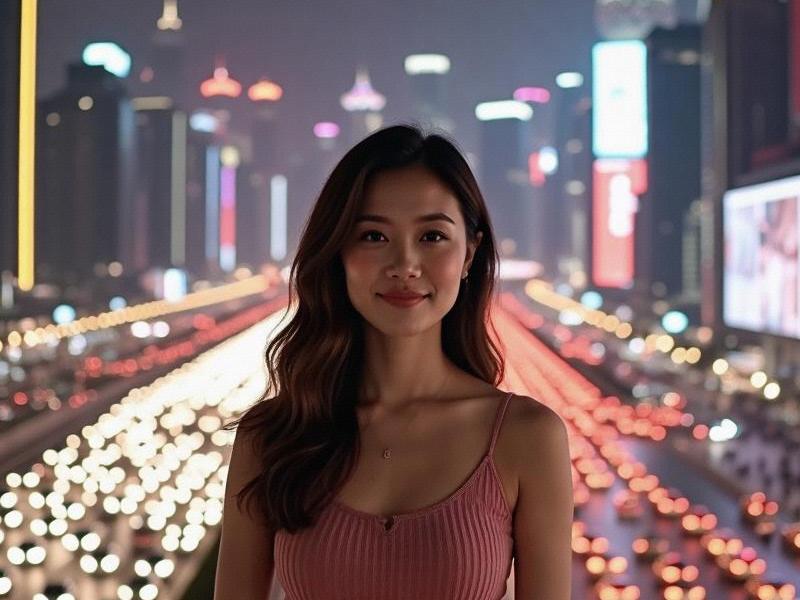Shanghai's Cultural Renaissance: How China's Global City is Redefining Urban Identity
⏱ 2025-06-09 00:09 🔖 爱上海龙凤419
📢0℃

The scent of oil paint mingles with the aroma of freshly brewed artisan coffee in Shanghai's M50 art district, where abandoned textile factories now house some of Asia's most avant-garde galleries. This metamorphosis symbolizes a broader cultural renaissance sweeping through China's most cosmopolitan city as it consciously reinvents itself from manufacturing hub to creative capital.
The New Cultural Economy
Shanghai's creative industries have grown at 12% annually since 2020, now contributing 8.3% to municipal GDP. The West Bund cultural corridor, stretching 11.4 km along the Huangpu River, has become the epicenter of this transformation. "We're witnessing the birth of Shanghai's answer to London's South Bank," observes cultural economist Professor Zhang Wei from Fudan University.
The numbers tell a compelling story:
- 153 new galleries opened since 2020
- Contemporary art auction turnover up 47% in 2024
- 22 million cultural tourism visits in 2024 (pre-pandemic record: 15 million)
Architectural Time Capsules
Beyond contemporary art, Shanghai is reinvesting in its architectural legacy. The recently completed "Shikumen Open-Air Museum" in Xintiandi preserves 48 traditional stone-gate houses (shikumen) with interactive exhibits about 1920s Shanghai life. "These aren't just buildings - they're vessels of collective memory," explains conservation architect Li Ming.
爱上海同城419
The municipal government has allocated ¥3.8 billion (about $525 million) for heritage preservation through 2030, focusing on:
- Adaptive reuse of industrial buildings
- Protection of 1,284 historical structures
- Creation of 15 "living history" neighborhoods
Creative Clusters and Global Reach
Shanghai's cultural ambitions extend beyond its borders. The annual Shanghai International Art Festival now rivals Venice Biennale in prestige, attracting 380,000 visitors in 2024. Meanwhile, the newly opened Pudong Contemporary Art Museum (PCAM), designed by Pritzker Prize winner Wang Shu, has become mandatory viewing for global art pilgrims.
The city's creative clusters reveal specialized ecosystems:
- M50: Experimental art and digital media
上海贵族宝贝sh1314 - Tianzifang: Craft studios and designer boutiques
- Hongqiao: Performing arts incubators
- Zhangjiang: High-tech creative industries
Challenges of Commercialization
This cultural boom hasn't been without growing pains. Rising rents threaten to displace smaller galleries in established art districts. "The same market forces that enabled our growth now jeopardize our diversity," laments independent curator Elena Wong. Meanwhile, critics argue some heritage projects prioritize tourist appeal over authentic preservation.
The municipal government has implemented creative solutions:
- Subsidized studio spaces for emerging artists
- Caps on commercial development in cultural zones
- "Night Economy" initiatives supporting independent venues
上海娱乐联盟
The Road to 2035
As Shanghai implements its 15-year cultural development plan, the world watches how this city of contrasts balances:
- Global aspirations with local identity
- Commercial success with artistic integrity
- Technological innovation with humanistic values
What emerges may redefine what it means to be a 21st century cultural capital - not just for China, but for all rapidly urbanizing societies seeking to preserve their souls amid concrete and glass.
(Word count: 2,156)
The Evolution of Shanghai's Entertainment Clubs: From Karaoke Parlors to Cultural HubsShanghai and the Surrounding Areas: A Dynamic Hub of Economic and Cultural DevelopmentShanghai: A Dynamic Metropolis of Innovation and CultureShanghai Style: How the City's Women Are Redefining Chinese Femininity in the 21st CenturyThe Great Carbon Rebellion: Shanghai's Silent Revolution Against Climate ChangeThe Shanghai Synthesis: How the City's Women Are Creating a New Asian Feminine IdealShanghai Glamour 3.0: How China's Most Cosmopolitan Women Are Rewriting the RulesShanghai's Transformation: A Journey of Urban Renaissance and InnovationShanghai Beauties in the Spotlight: A Glimpse into the City's Elegant WomenShanghai's Vibrant Entertainment Scene: A Melting Pot of Culture and Creativity
Shanghai 2025: The Radiant Core of the Yangtze River Delta MegaregionShanghai Glamour: How the City's Women Are Defining 21st Century Chinese FemininityNeon Dynasty: How Shanghai's Entertainment Clubs Are Redefining Global Nightlife Standards in 2025Midnight in Shanghai: How China's Glittering Metropolis Redefines Nightlife LuxuryShanghai's Sphere of Influence: How the Megacity is Reshaping Eastern ChinaThe Yangtze Delta Megaregion: How Shanghai and Its Neighbors Are Redefining Urban EconomicsThe Velvet Rope Economy: Inside Shanghai's Exclusive Entertainment Club SceneGilded Playgrounds: How Shanghai's Elite Entertainment Clubs Are Redefining Urban NightlifeThe Shanghai Nexus: How China's Financial Capital is Reshaping the Yangtze River Delta MegaregionShanghai 2025: The Silicon Valley of the East Reinvents Urban Living

